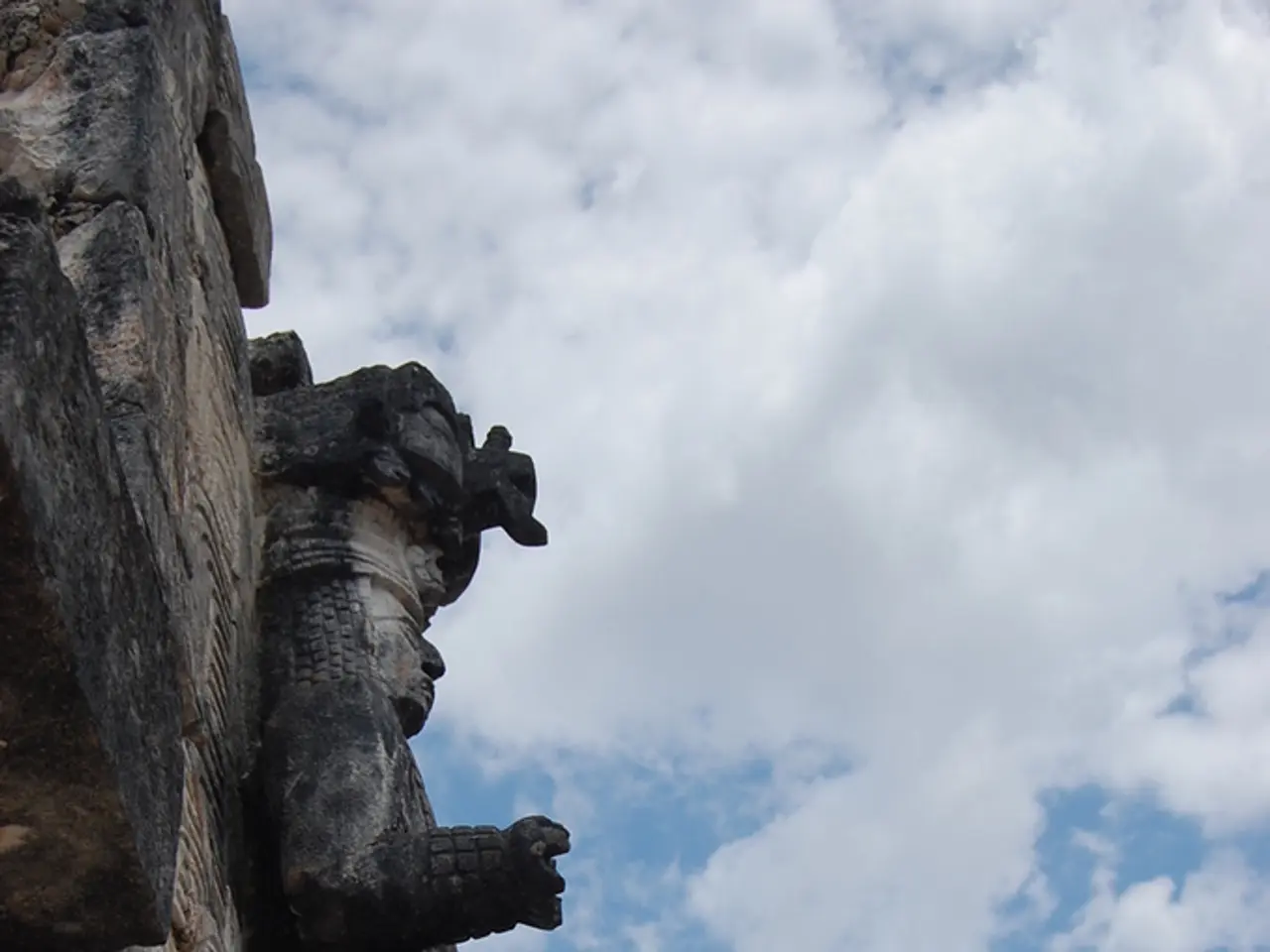Discoveries of ancient rock carvings at a height of 3,000 meters have led to their registration for protection.
In the heart of Turkey's Van province lies the Gürpınar district, a hidden paradise that is home to a fascinating archaeological discovery. Nestled on the Tirişin Plateau, at an altitude of 3,000 meters, are prehistoric rock carvings that date back thousands of years[1][2].
First recorded in 1967, these engravings, carved into bedrock and scattered stones, depict a diverse range of wildlife, such as bison, wild goats, deer, and foxes, as well as humans, snakes, and symbolic motifs[1][2]. The figures, engraved using linear and incised techniques, provide valuable insight into the region's ancient wildlife and human activity[1][2].
The initiative to document and preserve these historical sites is led by Rafet Çavuşoğlu, head of the Archaeology Department at Van Yüzüncü Yıl University's Faculty of Letters[1]. To date, nearly 300 individual carvings have been photographed and catalogued[1].
These representations reflect the systems used by hunter-gatherer societies and are believed to date back to the Mesolithic era, around 10,000 B.C.E[1][2]. Remarkably, the figures remain in use until the Iron Age, suggesting sustained human occupation and ceremonial activity from the Iron Age through the Middle Ages, likely connected to the Urartian civilization[1][2].
The rock carvings' proximity to a recently discovered Iron Age fortress and surrounding sites, such as Beşbudak Village on the Tirişin Plateau, underscores the region's ancient strategic, cultural, and pastoral importance[1][2]. The presence of symbolic rock carvings near this fortress points to its possible roles in defense, administration, pastoralism, and ritual use, reflecting a complex social and cultural landscape[1][2].
The Gürpınar district's archaeological assets, including this high-altitude fortress with nearly 50 rooms and decorated carved stones, demonstrate advanced construction and settlement in a challenging mountainous environment[1][2]. This, combined with the spectacular ancient rock carvings and fortress ruins, positions Gürpınar as an emerging destination for cultural and archaeological tourism[1][2][3].
Developing infrastructure to enable safe access to the rugged Tirişin Plateau and interpretive resources could attract visitors interested in history, archaeology, and natural landscapes, thereby enhancing regional tourism[1][2][3]. Once registered, the area could open to visitors, offering access to both its natural beauty and prehistoric art.
An inventory dossier is being prepared for submission to the Van Regional Board for the Protection of Cultural Heritage, seeking the site's registration as an "immovable cultural asset"[1]. The Culture and Tourism Ministry supports this initiative, and a group of 12 archaeologists, anthropologists, and art historians are involved[1]. As research continues, the number of identified figures in the Gürpınar site is expected to increase[1].
Interestingly, representations of water sources symbolizing two rivers are found in the Gürpınar site and are repeated 10 kilometers away in the Baltutan site[1]. This discovery suggests a connection between these sites and the possibility of a larger, previously unknown network of prehistoric rock art in the region.
In summary, the prehistoric rock carvings in Van’s Gürpınar district are part of a broader archaeological complex tied to the Urartian era and Iron Age settlements. These findings highlight historically rich, multi-period human activity with significant potential to boost tourism through archaeological heritage promotion.
Scientists might study the archaeological findings in the Gürpınar district, such as the prehistoric rock carvings, to better understand the historical lifestyle and travel patterns of the ancient civilizations. The uniquely preserved rock carvings and fortress in Van's Gürpınar district could potentially transform the area into a hub for science, history, lifestyle, and travel tourism, showcasing a fascinating blend of past and present cultures.




